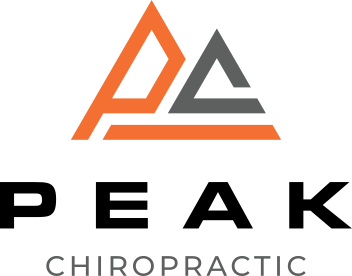When you're faced with a sports injury, knowing how to approach recovery can greatly impact your return to the game. You might start by prioritizing rest and employing the R.I.C.E method to manage initial pain and swelling. However, recovery doesn't end there; a tailored rehabilitation program could be essential for restoring your mobility and strength. What you eat also plays a important role in how quickly you heal. But there's more to explore regarding pain management and prevention strategies that can make a real difference in your recovery journey.
Rest and Recovery Strategies
When you're recovering from a sports injury, prioritizing rest is essential, as it allows your body the time it needs to heal. You might feel tempted to push through the discomfort, but doing so can delay your recovery. Instead, listen to your body and give it the downtime it deserves.
Establish a balance between rest and activity. This doesn't mean complete inactivity; instead, you should focus on gentle movements that don't strain your injury. If you're dealing with a sprain or strain, following the R.I.C.E method (Rest, Ice, Compression, Elevation) can be a game-changer. Ice reduces inflammation, while compression and elevation help manage swelling.
Set aside specific periods for rest. Create a daily schedule that includes breaks for relaxation and sleep. Quality sleep is vital, as it's during this time that your body repairs itself. Try to establish a calming bedtime routine to enhance your sleep quality.
Stay hydrated and maintain a balanced diet, as nutrition plays a significant role in recovery. Your body needs the right nutrients to heal effectively. Incorporate foods rich in protein, vitamins, and minerals to support tissue repair and boost your immune system.
Lastly, don't hesitate to consult with a healthcare professional. They can provide tailored advice on your recovery journey.
Rehabilitation Exercises
After you've prioritized rest and allowed your body to begin healing, incorporating rehabilitation exercises becomes vital for a successful recovery. These exercises are designed to restore strength, flexibility, and mobility to the injured area, ensuring you can return to your sport safely and effectively.
Start by consulting with a physical therapist or sports medicine professional, who can guide you through a tailored program that suits your specific injury.
Begin with gentle stretching to improve flexibility and reduce stiffness. Gradually introduce strength training exercises that target the muscles surrounding the injured area. For instance, if you've hurt your ankle, you might focus on calf raises, toe taps, and resistance band workouts to rebuild strength and stability.
Pay attention to your body's signals; if something feels painful, ease off and adjust your approach.
Balance and coordination exercises are also vital. They help retrain your body to function properly and can prevent future injuries. Incorporate movements like single-leg stands or stability ball workouts to enhance your balance.
Consistency is key in rehabilitation exercises. Aim to practice them regularly, ideally daily, while gradually increasing intensity as your strength improves.
Remember, recovery isn't a race; take your time and be patient with yourself. As you progress, celebrate the small victories, and stay motivated by keeping your long-term goals in mind.
With dedication to your rehabilitation exercises, you'll find yourself back in action sooner than you think.
Importance of Nutrition
Nutrition plays an essential role in your recovery from a sports injury. When you're injured, your body needs the right nutrients to heal effectively. Without proper nutrition, your recovery can slow down, leaving you frustrated and sidelined longer than necessary.
First, focus on protein. It's important for repairing tissues and building muscle. Incorporating lean meats, fish, eggs, dairy, beans, and nuts into your meals will help provide the necessary amino acids for ideal recovery. Aim for a balanced intake throughout the day to support ongoing healing.
Next, don't underestimate the power of vitamins and minerals. Vitamin C plays a key role in collagen formation, which is essential for repairing tendons and ligaments. Citrus fruits, strawberries, and bell peppers are excellent sources.
Additionally, vitamin D and calcium are important for bone health. Foods like fortified milk, fatty fish, and leafy greens can help you meet these needs.
Hydration is another essential component. Water facilitates nutrient transport and helps eliminate waste products from your body. Make sure you're drinking enough fluids daily, especially if you're engaging in any rehabilitation exercises.
Finally, consider anti-inflammatory foods, like berries, turmeric, and fatty fish, to help reduce swelling and pain. These can aid in speeding up your recovery process, allowing you to return to your sport with renewed strength and vigor.
Prioritize your nutrition, and you'll greatly enhance your recovery journey.
Physical Therapy Benefits
Many athletes find that physical therapy is an essential part of their recovery process. It offers targeted treatment that helps you regain strength, flexibility, and mobility after an injury. By working with a qualified physical therapist, you can develop a personalized rehabilitation plan tailored to your specific needs, which enhances your recovery and gets you back to your sport more quickly.
One of the key benefits of physical therapy is the hands-on approach. Your therapist will guide you through exercises and techniques designed to restore function and reduce the risk of future injuries. They'll also assess your movement patterns, identifying any imbalances or weaknesses that could lead to further issues down the line.
Another advantage is the emphasis on education. You'll learn about your injury and the recovery process, which empowers you to take an active role in your rehabilitation. This knowledge can help you make informed decisions about your training and overall health.
Physical therapy also incorporates various modalities, such as ultrasound, electrical stimulation, and manual therapy, to enhance recovery. These treatments can alleviate swelling, improve circulation, and promote healing, making your rehabilitation more effective.
Finally, the supportive environment provided by physical therapists can boost your motivation. They celebrate your progress and help you stay focused on your goals, ensuring you remain engaged in the recovery journey.
With the right guidance and support, physical therapy can greatly improve your recovery experience and help you return to peak performance.
Pain Management Techniques
When dealing with sports injuries, effective pain management is essential for your recovery.
You can use ice and compression therapy to reduce swelling, while medication and relaxation techniques can help alleviate discomfort.
Let's explore these methods to find what works best for you.
Ice and Compression Therapy
Ice and compression therapy stands out as a cornerstone in pain management for sports injuries. When you experience swelling or pain, applying ice can help reduce inflammation and numb the affected area. You should aim for 15 to 20 minutes of icing every hour, especially during the first 48 hours post-injury.
Remember to wrap the ice pack in a cloth to protect your skin from frostbite.
Compression, on the other hand, works hand-in-hand with ice to minimize swelling. By using an elastic bandage or compression wrap, you can apply consistent pressure to the injured area. This helps limit fluid buildup and can greatly aid in your recovery.
Make sure the wrap isn't too tight; you don't want to cut off circulation.
Combining ice and compression not only alleviates pain but also promotes faster healing. After the initial phase, you can gradually incorporate gentle movement, but always listen to your body.
If pain persists, revisit your therapy method or consult a professional. By mastering ice and compression therapy, you're taking a proactive step toward effective pain management and a smoother recovery.
Medication and Relaxation Techniques
Managing pain effectively after a sports injury can notably enhance your recovery experience. Utilizing both medication and relaxation techniques can play essential roles in alleviating discomfort and promoting healing.
Over-the-counter pain relievers, like ibuprofen or acetaminophen, can help reduce inflammation and manage pain. Always consult with your healthcare provider to verify you're using the right medication for your specific situation.
In addition to medication, relaxation techniques can be equally beneficial. Practices such as deep breathing exercises, progressive muscle relaxation, and guided imagery can help reduce stress and tension in your body.
These techniques not only distract you from pain but also promote overall well-being.
Don't underestimate the power of mindfulness meditation, either. Spending just a few minutes each day focusing on your breath can markedly lower your perception of pain.
Combining these relaxation methods with medication can create an all-encompassing pain management strategy that supports your recovery.
Injury Prevention Tips
To keep injuries at bay, you'll want to focus on proper warm-up techniques that prepare your body for activity.
Strengthening key muscles and incorporating flexibility and stretching exercises can also make a significant difference in your performance.
Proper Warm-Up Techniques
Warming up properly is essential for preventing injuries and enhancing your performance. Before diving into intense activities, take time to prepare your body. Start with five to ten minutes of light aerobic exercise, like jogging or brisk walking, to increase your heart rate and blood flow to your muscles.
Next, incorporate dynamic stretches that mimic the movements you'll perform during your sport. Think high knees, leg swings, or arm circles. These stretches help improve flexibility and range of motion without overstretching. Focus on the major muscle groups you'll engage, ensuring your body is primed for action.
Pay attention to your balance and coordination through sport-specific drills. For instance, if you're a basketball player, practice dribbling and shooting at a lower intensity. This not only warms up your muscles but also sharpens your skills.
Finally, listen to your body. If something feels off or tight, spend extra time on that area.
Strengthening Key Muscles
Strengthening key muscles is essential for injury prevention and overall athletic performance. By focusing on specific muscle groups relevant to your sport, you can enhance stability, balance, and power.
Start by identifying the muscles that support your primary activities. For instance, if you're a runner, strengthen your calves, quadriceps, and hamstrings. If you play a sport like basketball, prioritize your core, glutes, and legs.
Incorporate resistance training into your routine. Exercises like squats, lunges, and deadlifts can build strength in major muscle groups. Aim for two to three strength-training sessions per week, ensuring you target both the upper and lower body.
Don't forget about functional movements; these mimic the actions you perform in your sport and help prepare your body for the demands of competition.
Also, consider using bodyweight exercises like push-ups and planks, which engage multiple muscle groups simultaneously. Gradually increase the intensity and complexity of your workouts to keep challenging your muscles.
Flexibility and Stretching Exercises
Incorporating flexibility and stretching exercises into your routine can greatly reduce the risk of injuries and enhance your overall performance. These exercises improve your range of motion, allowing your muscles and joints to function more effectively during sports activities.
Start with dynamic stretching as part of your warm-up. Movements like leg swings and arm circles prepare your body for action by increasing blood flow and loosening your muscles.
After your workout, switch to static stretching to help your muscles recover. Focus on holding stretches for at least 20-30 seconds, targeting major muscle groups like your hamstrings, quadriceps, and shoulders.
Don't forget to listen to your body. If you feel tightness or discomfort, it's a sign you need to stretch more.
Consistency is key; aim to include flexibility training at least three times a week. You can also incorporate yoga or Pilates into your routine, as these practices focus heavily on flexibility and core strength.
Conclusion
Incorporating these techniques into your recovery routine can make a significant difference in how quickly you bounce back from a sports injury. Prioritize rest, engage in tailored rehabilitation exercises, and nourish your body with the right nutrients. Don't underestimate the benefits of physical therapy and effective pain management strategies. By focusing on these key areas, you'll not only recover faster but also reduce the risk of future injuries, helping you get back to doing what you love.



